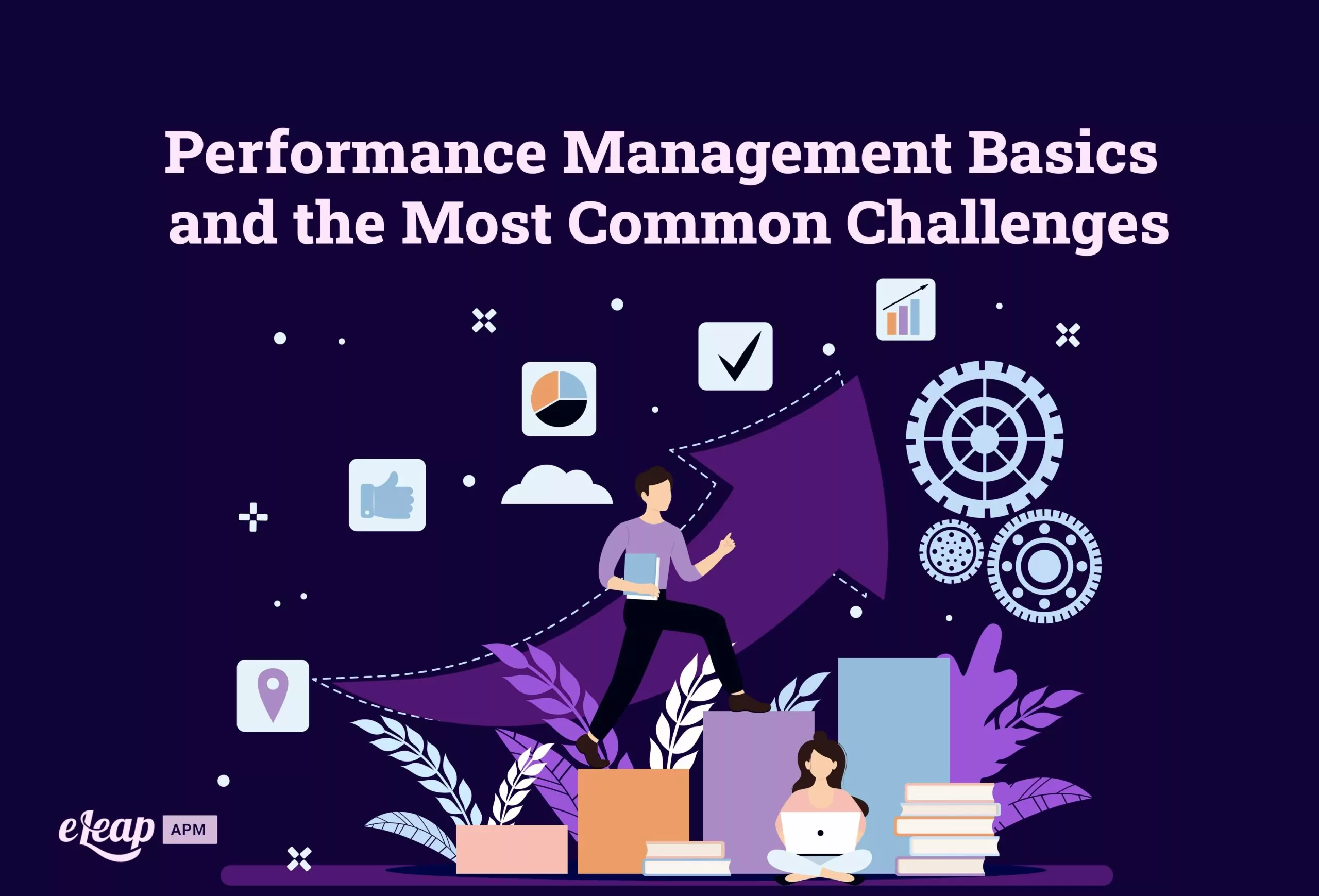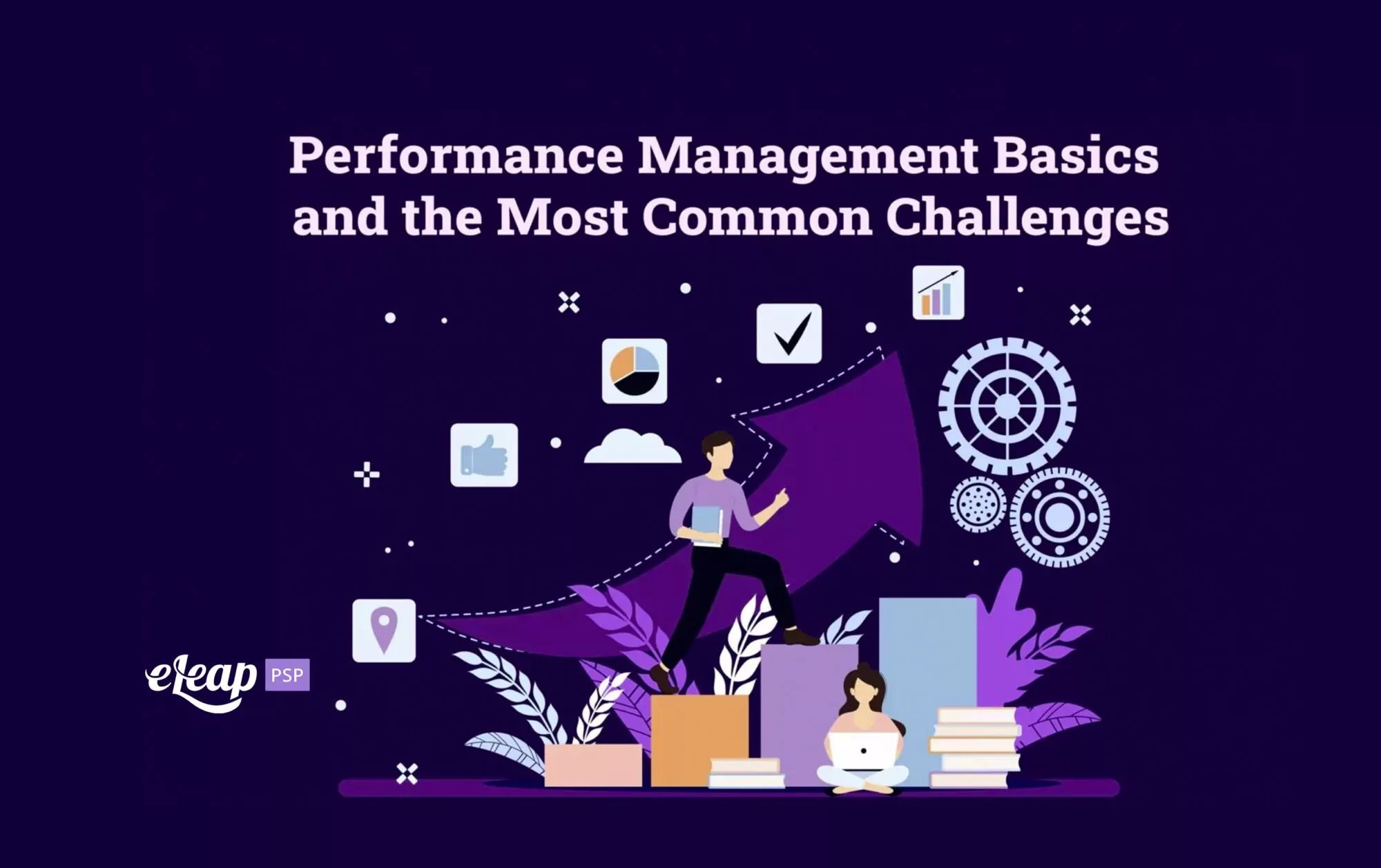Performance Management Basics and the Most Common Challenges

The way employees are rated and reviewed is incredibly important. Organizations must constantly gauge how team members are performing and interacting on a daily basis.
Additionally, you can ensure that new and veteran employees continue to perform at a high level. If there are issues involved with development or performance, you need to understand where these challenges are coming from and how to solve them.
This means having the right performance management system in place to do these reviews. They should also be done in a way that makes employees feel like they’re being helped and not punished.
Performance reviews were looked at with dread in the past, and the annual performance review was hardly looked forward to. Currently, this view has all but been eliminated, as most organizations have adopted newer, employee-friendly ways of managing performance.
However, some companies may still be unfamiliar with even the most basic concepts of modern performance management. This is unfortunate, as organizations of all types and sizes can take advantage of the right performance management system. The eLeaP continuous performance management system provides organizations with powerful options to attract and retain high caliber team members.
In this article, we’ll discuss the most basic elements of performance management and the most common challenges associated with this process.

Modern Performance Management
Human resources have become a critical component of the success of almost every company. Some people don’t realize that a good portion of this success is largely due to an effective performance management system.
If your organization isn’t taking advantage of these systems, you need to understand all of the basics associated with the process.
What Is Performance Management?
There is a clear definition of performance management, regardless of the industry or the specific way this process is conducted. Performance management is defined as the process of grading and assessing different employee skills to gain an understanding of their development.
It’s also a way of grading how efficient these employees are in many different categories relevant to their position within your organization. What’s the central purpose of conducting these assessments?
These assessments are conducted in an effort to enhance each employees’ personal and professional development. In turn, this also enhances your organization’s development.
Areas that are graded include how employees interact with coworkers, how they feel about your organization, and what ideas they might have for your company moving forward. Normally, companies look for an indication of whether employee goals align with the goals of the company.
In the end, this makes for a more cohesive and collaborative environment and makes a company much more productive in the end.
While performance management is a critical and helpful part of any company’s strategy, it doesn’t come without challenges. The following section highlights the most common issues associated with the performance management process.
Challenges Associated with Performance Management
There are several challenges that come with performance management. These are some of the most common issues that organizations encounter during the performance management process:
1. The Right Support System
Performance reviews and performance management shouldn’t solely be intended for ground-level employees. They should also be used for all other members of the organization.
Every member of a team should be held accountable for their performance – from management to the receptionist. It’s important for leadership and management to show that they’re a part of the team and put themselves on the same plane as regular team members.
This not only makes the work environment and performance management process fair, but also boosts morale. When management puts themselves on the same level as the rest of the team, it promotes forward thinking.
This can make your team members look at management as more of a mentor instead of a boss. In the end, this mindset can pay huge dividends to your organization.
2. The New Generation
As new and younger age groups begin to enter the workforce, huge changes come with them. This means that your performance management system must be open to change and remain flexible to accommodate these changes.
This means that your system shouldn’t always have to follow the rules of tradition. Performance reviews don’t constantly need to be influenced by specific roles and designated positions.
In many corporate settings, roles and designated positions or titles are being eliminated. This means that performance management systems need to roll with these punches.
Many companies are implementing project-based performance management systems. This includes employees being graded on a project-to-project basis. In the end, this can be a more efficient way to analyze specific skills and help team members level up on these skills.
3. Late Feedback
Usually, when performance reviews are given to management or members of a corporate, it’s not always at the same time. This can create challenges and cause frustration among employees who want quick feedback from their reviews.
The review process often can cause stress as employees are curious to understand what areas they’re efficient in and what areas need improvement. They’re anxious to make the appropriate changes, so speedy feedback can become a challenge with many organizations.
This is especially true of companies that have a large workforce. Additionally, making employees wait for their feedback can cause them to lose sight of general areas of importance in their reviews. This can also lead to them feeling disgruntled or frustrated at management or the corporate team.
4. Communication
Any company that wants to continue a good environment and lasting relationships with its workforce must encourage an open-ended line of communication. Many times, employees feel like the review process is one-sided.
This can lead to a rift in relationships between team members and management. There should always be a two-way environment when it comes to performance management. Employees need an opportunity to voice their opinions on their own performance, as well as the performance of management and peers.
If your organization is still having these challenges when it comes to performance management, you should consider updating your platform. New changes and advances have made the review process much fairer, leading to a better relationship between employees and management.
In the end, a relationship that promotes communication and collaboration leads to a much better work environment and a huge boost for your organization.